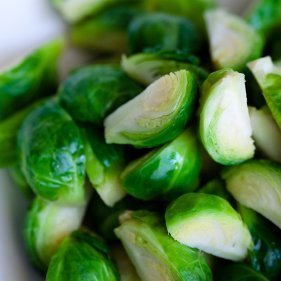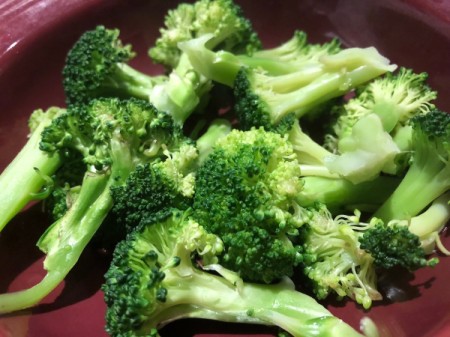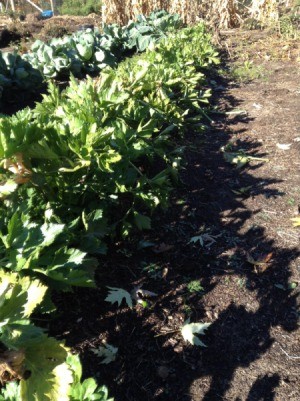
Share on ThriftyFunThis page contains the following solutions. Have something to add? Please share your solution!
There have been a lot of requests for blanching veggies as of late so here's an easy timetable to follow. Be sure to check tenderness part way into the blanching guide times because freshness and size of vegetables vary and can affect how long they truly need to blanch.
Be sure to give the veggies an immediate ice water bath after the blanching to stop the cooking process. Pat veggies dry if you are going to be freezing them and remove as much air from the freezer bag as possible because both help to reduce freezer burn.
Source: Collected over the years and finally decided to get them all organized ;-)
By Deeli from Richland, WA
Before I use many of my vegetables in recipes like pan-fried or oven roasted sides, I will parboil or blanch them. This helps me out in many ways. Precooking will cut down the amount of oil I use altogether by a lot, saving on calories and money. It also decreases the cooking time all around, and time is money.
Blanching veggies does a great service visually, as it locks in their beautiful colours. Parboiling also aids in the vegetable's overall texture at the end result, and locks in nutrients. Of course, if you're using a recipe that calls for mini bits of veggies, you do not need to do this. :)
Our garden is producing very well this year! To keep up with production we decided to make our own frozen veggies. This is a great way to get fresh and frozen at the same time, with just a few steps.
Blanching Vegetables. All vegetables contain naturally occurring enzymes. In some vegetables, unless these enzymes are deactivated with heat before the vegetable is frozen, the enzymes will continue to break down and age them even at freezing temperatures.
Recently while trying to blanch/freeze 12 lbs. of green beans, I ran out of ice to cool the blanched beans. Instead I used some drink boxes, that I always keep in the freezer to use in lunchboxes to keep food cold until lunch time.
I use a plastic mesh lemon bag to blanche my veggies in boiling water before freezing. I bag them in quantities ready for recipes so they are ready to pull from the freezer any time I need them.
Ask a QuestionHere are the questions asked by community members. Read on to see the answers provided by the ThriftyFun community or ask a new question.
What is the proper time to blanch green beans before freezing? One person said 1 minute and another said 3 minutes. Also, can I put them in a freezer bag or do I need actual freezing containers?
By Missiesue from Munger, MI
Blanch for at least 3 minutes if pre-cut into 1 inch pieces. Longer 3-5 minutes if whole. Plunge them into ice cold water for the same amount of time as you blanched them to bring the temperature down. Drain/dry the beans well before using.
Why is it necessary to blanch vegetables prior to freezing? Why can't I just wash, drain, cut, and freeze the raw green beans?
By Jackie
I think you can but the blanching, if I remember correctly helps to keep frost from forming on them. The proper procedure is to blanch them for one minute, plunge them in ice water for a minute then lay them on a towel to dry.
It's to preserve the color, keep crisp yet tender and halts the enzymes that deteriorates the nutritional value of the food during storage. Also, assorted veggies need different amounts of blanching time. For instance, beans should be blanched for 3 minutes, corn on the cob for 4 minutes and beets anywhere from 25 to 50 minutes depending on their size. All varieties of onions and peppers do not need to be blanched.
Blanching vegetables and sometimes fruits is necessary before freezing to destroy enzymes and bacteria that could cause spoilage. It also helps to preserve a vibrant color on the frozen product. Plunging the vegetables in ice water stops the cooking process.
Jackie, I do blanch somestuff like any beans,if you don't they will freezer burn and have a freezer taste. I do know I put corn up this year and I didn't blanch it and eat taste good. And I don't blanch greens either,but you must get all the air out of it. But on all beans and peas I wouldn't blanch. Happy Day.
Why do we blanch veggies before freezing?
By Guy T.
To stop the enzymes in the foods. Otherwise the food will continue to ripen and become mush.
I think the blanching breaks down the plant cells. Then the moisture in them does not freeze and burst, that changes the texture of the food.
Blanching slows or stops the action of enzymes which cause loss of flavor, color and texture. Blanching also cleanses the surface of dirt and organisms, brightens the color and helps retard loss of vitamins. Blanching also wilts or softens vegetables and makes them easier to pack.
Is blanching required for freezing yellow squash, cabbage, corn, and broccoli?
By Jackie from Sweetwater, TN
I looking for information about blanching squash.
Linda from Roanoke, VA
Here's some info I had; hope it helps.
Copy printable Format: extension.missouri.edu/
Squash: summer (Cocozelle, Crookneck, Straightneck, White scallop, Zucchini)
Choose young squash with tender skin. Wash and cut in 1/2-inch slices. Water blanch 3 minutes. Cool promptly, drain, package, seal and freeze.
oGrated zucchini (for baking)
Choose young tender zucchini. Wash and grate without peeling. Steam blanch in small quantities for 1 to 2 minutes until translucent. Drain well and pack in containers in amounts needed for recipes. Cool by placing the containers in cold water. Seal and freeze. If watery when thawed, drain the liquid before using the zucchini.
Squash: winter (Acorn, Banana, Buttercup, Butternut, Golden Delicious, Hubbard)
Select firm, mature squash with a hard rind.
Prepare same as for pumpkin.
===
Pumpkin
Select full-colored mature pumpkins with fine texture. Wash, cut into cooking-size sections and remove seeds. Cook until soft in boiling water, in steam, in a pressure cooker, in an oven or microwave oven. To cool, place pan containing pumpkin in cold water and stir occasionally. Remove pulp from rind and mash. Package, seal and freeze.
Note:
Small pumpkins can be pierced and baked whole on a tray in an oven or microwave oven until soft. After cooling, peel, remove strings and seeds and mash. Package, seal and freeze.
 It is mid October here in Wisconsin. Is it too late for me to blanch my celery plants? They are pretty bitter. If it is too late, how can I reduce the bitterness?
It is mid October here in Wisconsin. Is it too late for me to blanch my celery plants? They are pretty bitter. If it is too late, how can I reduce the bitterness?
By Sandra from Altoona, WI
Blanching vegetables in your Instant Pot is quick and easy. Here are some tips for how to do it. This is a page about blanching vegetables in an Instant Pot.